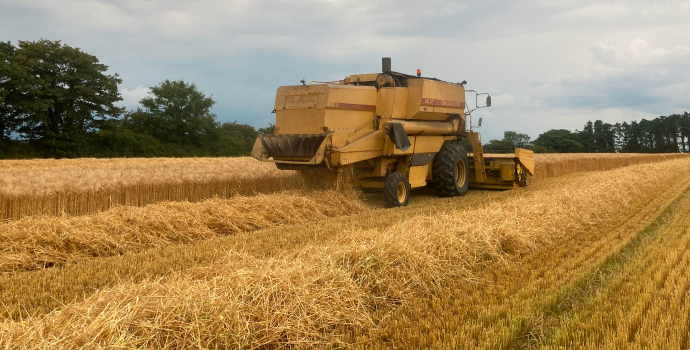
Prices for Irish dried spot wheat are unchanged for the week at €215/t. Jan-Apr values are €2/t lower at €218/t. Barley has slipped and is now trading at parity with wheat. Spot values are down €1/t to €215/t and post Xmas down €2/t to €218/t. Quotes for spot maize and Jan – Apr are up €1/t, while nearby soya prices are up €2/t and €3/t on a run from Jan – Apr.
Native/Import Dried Prices
| Spot / Nov 6th | Jan – April 2019 | |
| Wheat | €215 | €218 |
| Barley | €215 | €218 |
| Oats | €215 | €223 |
| OSR | €370 | – |
| Maize (Import) | €178 | €183 |
| Soya(Import) | €338 | €342 |
Dried new crop Irish prices for wheat are unchanged. However, barley is €5/t lower on the back of much increased winter sowings (+25% to +30%). New Crop Irish prices Basis: collected ex store Nov ’19 are Wheat: €195/t and Barley: €185/t
The FAO in its latest grain report has revised world wheat production for the 2018/19 crop year up by 9.2mt from last month on the back of increased production mainly in Canada and China with world stocks up 8.9mt. Despite the latest increase, world wheat stocks are seen marginally down on last season at (-12.4mt). The reduction in stocks to use ratio from 21.1% to 16.3% for the major exporters is supportive of price particularly if major production shocks were to emerge between now and harvest 2019 particularly in the Northern hemisphere. A clearer picture is beginning to emerge regarding Australia’s harvest outturn. Latest Government forecasts put wheat down 13% and barley production 17% lower on September projections. Wheat production is seen at 16.6Mt and barley at 6.9Mt.
The European wheat market eased slightly on Monday due to a lack of new export demand and a fall on U.S. markets, but prices remained above the psychologically important €200 mark.
A stronger euro also hampered the grain’s competitiveness on world markets, weighing on prices. However, corn prices were trading at the top of their recent range and this helped to bolster wheat prices as the week progressed.
Traders are awaiting the release of the U.S. Department of Agriculture (USDA) supply-demand report on Thursday (8th Nov). Many expect that that the USDA will further reduce its corn yield forecast. The corn harvest is 75% completed however, the recent rains have not only delayed harvest but caused quality issues due to the presence of a plant toxin known as Vomitoxin. At Higher level this toxin renders the corn unfit for animal or ethanol production.
U.S. soybean futures declined on Monday, following their two-month high set last week. There had been reports from Washington that there may be a resolution to the ongoing trade dispute however it appears to be false hope at this stage. In any event it appears that China may be able to remain on Brazilian supply as the new soybean crop is ahead of schedule this year and may arrive before the old stock runs out.


